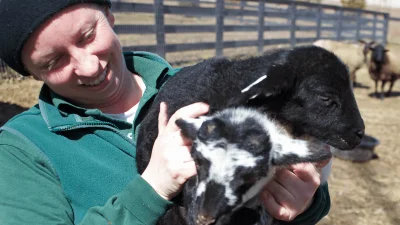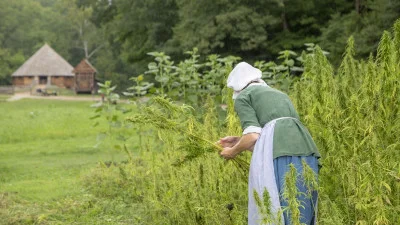Located on the banks of the Potomac, the four-acre Farm site explores George Washington’s role as a visionary farmer.
The Farm represents the more than 3,000 acres Washington cultivated during the second half of the 18th century. It offers visitors a chance to learn more about the lives of the enslaved workers who put Washington’s agrarian ideas into practice.
Watch costumed interpreters demonstrate Washington's innovative farming and fishing practices, hoe fields, cook over a fire, shear sheep, and harvest crops (activities vary day to day).
Explore a replica slave cabin and Washington's 16-sided treading barn. Stroll along the Wharf for a view across the Potomac River.

Live Demonstrations
From April to October, you can see live demonstrations Wednesday through Sunday at the Farm.


Animals
Animals of all kinds played an important role in Washington's life and the economy of the Farm at Mount Vernon.

Caring for Mount Vernon's Livestock
Animals were used in every aspect of farm life in the 18th century, from transportation to providing fiber for clothing. Today, Mount Vernon works to share this with visitors.

Plant Finder
What to know what's is growing at the Farm? The name of a plant at Mount Vernon? Or if George Washington grew it?
Use the Plant Finder tool to help you while strolling the gardens.

Washington's 16-Sided Barn
One of Washington’s masterful farming innovations was a 16-sided barn designed for treading wheat—his most important cash crop.
The barn at the Farm site is an exact replica of the original that was located on Washington's estate.

Hemp
Throughout his lifetime, Washington cultivated industrial hemp at Mount Vernon. Records show it was used in repairing large seine fishing nets.

Fisheries
For almost 40 years, Washington's fishing operations along the Potomac brought in food for enslaved and paid workers, and by selling the surplus, provided additional profits for the estate.

A Day in the Life of an Enslaved Field Worker
Washington expected his workforce to get as much done as possible every day, which could mean 14-hour days in the summer.
He wrote in 1789, "Every Labourer (male or female) does as much in the 24 hours as their strength without endangering the health, or constitution will allow of."
Replica Slave Cabin
While at the Farm, you can visit this replica cabin that depicts how many enslaved families lived at Mount Vernon.






















